
This logo isn't an ad or affiliate link. It's an organization that shares in our mission, and empowered the authors to share their insights in Byte form.
Rumie vets Bytes for compliance with our
Standards.
The organization is responsible for the completeness and reliability of the content.
Learn more
about how Rumie works with partners.

Do you struggle with math? If you do, you're not alone. For example, a lot of people see 3/4 or 5/6 and think, "I'm so bad at fractions!"
Thankfully, you can use 3 steps to change most fractions into decimals that are easy to work with:
Read it
Set up a long division problem
Complete the long division

What you'll need in your tool kit: while you practice, try working out the examples on paper or using a notepad app.
Review: Fractions and Decimals
Fractions and decimals are used to represent a portion or part of a whole.

Fractions
Fractions have a fraction bar. In a proper fraction, the whole number is written to the left of the fraction.
Decimals
Decimals have a decimal point separating the whole numbers from the decimal numbers.
Step 1: Read the fraction
Read the fraction from top (numerator) to bottom (denominator) and read the fraction bar as "divided by".

Example 1: 1 / 2
You read " 1 / 2 " as " 1 divided by 2".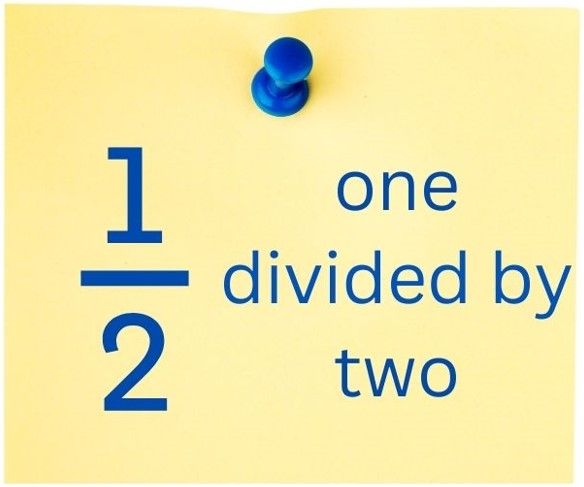
Example 2: 3 / 4
You read " 3 / 4 " as "3 divided by 4".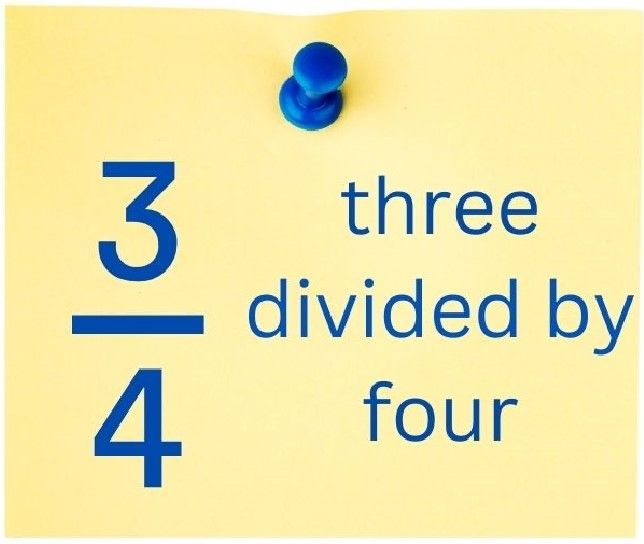
Step 2: Set up a long division problem
Since the top number (numerator) needs to be divided by the bottom number (denominator), put the top number under the long division symbol and the bottom number to the left on the outside.
Example 1:
1 / 2 is 1 divided by 2. The 1 goes under the long division symbol and the 2 goes to the left on the outside.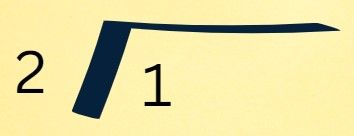
Example 2:
3 / 4 is 3 divided by 4. The 3 goes under the long division symbol and the 4 goes to the left on the outside.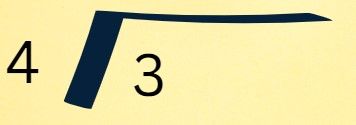
Step 3: Complete the long division

Divide using long division rules.
Since the number inside the long division symbol is smaller than the number outside the symbol, add a decimal point to the end of the number on the inside. Then add zeros as needed.
Example 1:
1 / 2 = 0.5

Example 2:
3 / 4 = 0.75
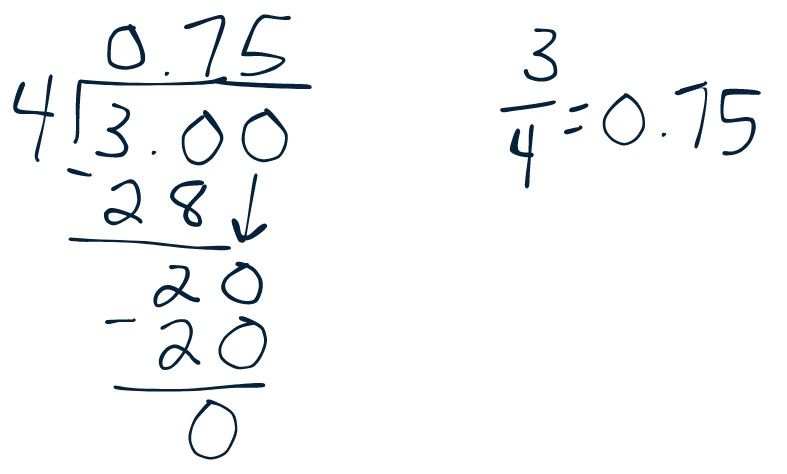
Want to learn more about long division? Check out this video!
Quiz
Convert 4 / 5 to a decimal.
The answer is 0.8 because when you convert the fraction you divide 4 by 5. 4 goes inside the long division sign and 5 goes on the outside.
What could go wrong?
 Look what happens if you place the wrong number inside the long division symbol.
Look what happens if you place the wrong number inside the long division symbol.
Example 1:
Convert 1 / 2 to a decimal.
The mistake in the example: when you read the fraction, it's 1 divided by 2. That means the 1 should go inside the division symbol, not outside.


Ask yourself, "Is this reasonable?"
Since 1 / 2 is less than 1, the decimal should also be less than 1.
Example 2:
Convert 3 / 4 to a decimal.
The mistake in the example: when you read the fraction, it's 3 divided by 4. That means the 3 should go inside the division symbol, not outside.
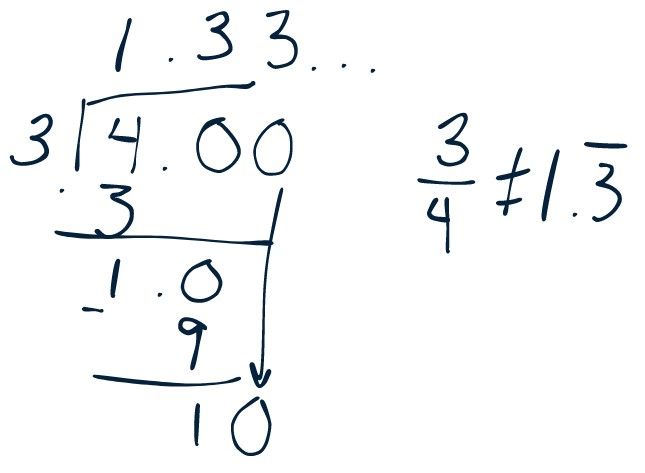

Ask yourself, "Is this reasonable?"
Since 3 / 4 is less than 1, the decimal should also be less than 1.
Quiz
A student converted 1/3 to a decimal and their answer was 1.3. What was likely the error the student made?
The student didn't read the problem, write the division problem, and then divide. Instead, the student only replaced the fraction bar with the decimal.
Take Action

Look what great math you CAN do!
Sometimes math can be challenging, but using tips, tricks, and steps can help you step up to the challenge. Take what you've learned and keep practicing. You'll be an ace at fractions and decimals in no time.
This Byte has been authored by
Theresa Dwulit
Learning Designer
M.Ed.